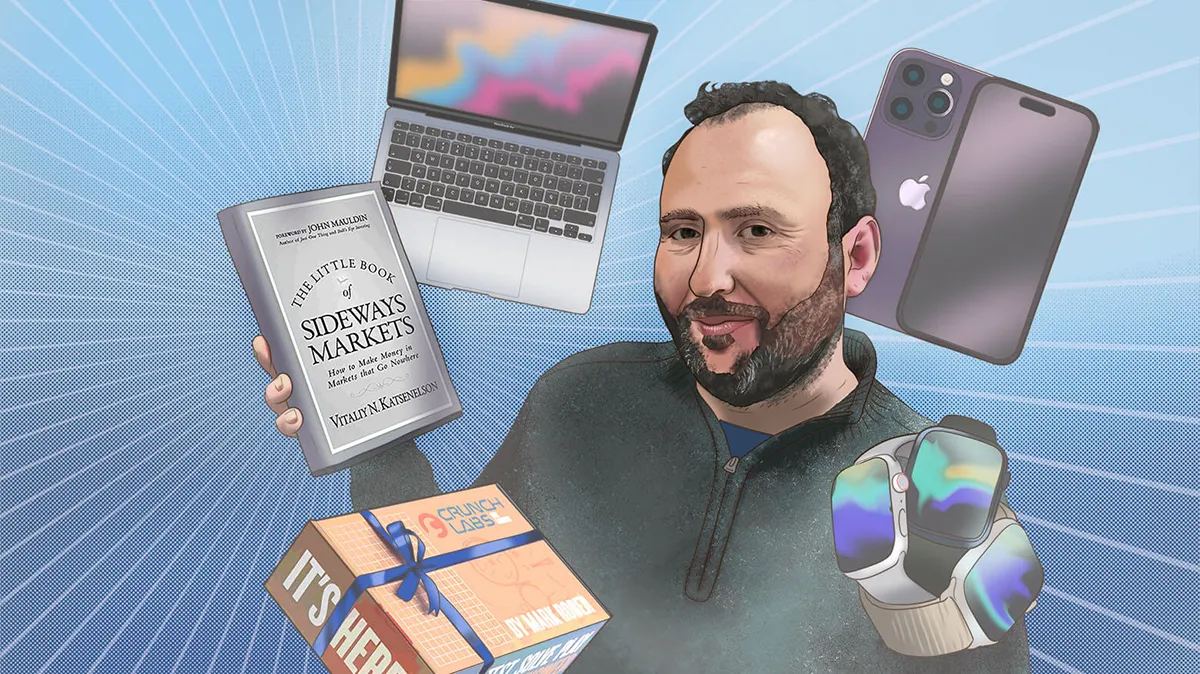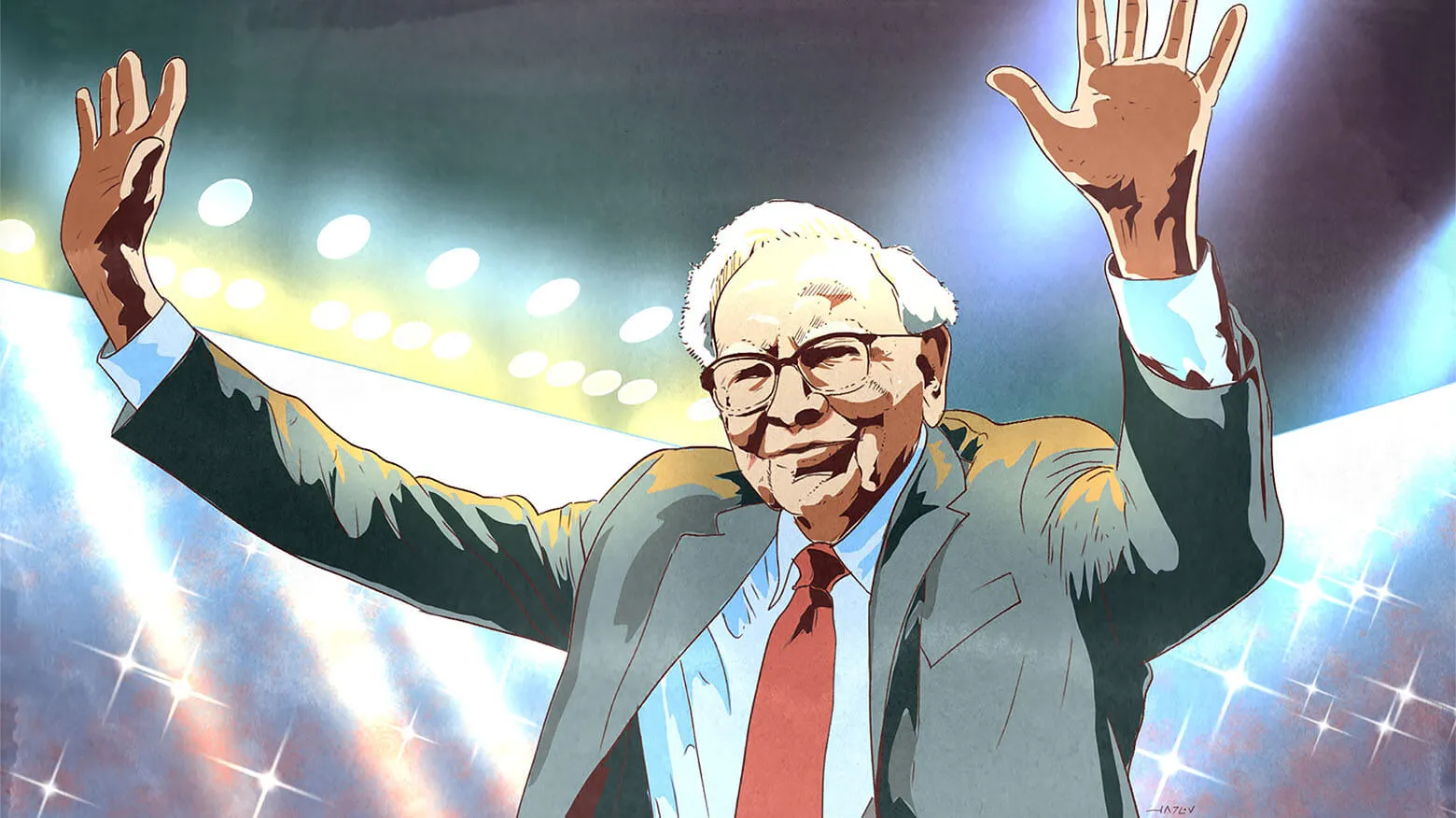Over the next two weeks, I will share with you a few excerpts from my 25-page summer letter to IMA clients.
Next week, I will be comparing my children to stocks and divulging my latest thoughts on Uber and Qualcomm.
My purpose in sharing these excerpts is to give you insights into the investment process, so they all have the same focus – to teach you how to fish, not to provide you with the fish. So please take them as such.
Today I will share the Q&A section of the letter. Every time I am almost finished with the client letter, I ask clients to send me any questions they have about their portfolio or other topics. I answer these questions in the Q&A section. This way all clients can benefit from these answers (I hope).
Now, if you have young kids, you may benefit from the following; otherwise feel free to skip to the letter.
Crunch Labs
I want to tell you about something I recently started doing with my nine-year-old daughter, Mia Sarah. Mia Sarah is a very curious and creative girl with some odd hobbies: For example, she loves mixing glue, baking soda, and a saline solution, making slime. She then stuffs the slime into tiny balloons, turning them into tiny stress balls. I am the biggest recipient of these balls. Either she loves giving me presents or I look stressed.
As a parent, it is my job to notice little green shoots of curiosities in my kids and encourage them. When I noticed that Mia Sarah loved to draw, I found an app on the iPad that lets her turn her drawings into cartoons.
At her school she was introduced to Mark Rober’s YouTube videos. Mark used to work for Apple and NASA. His videos, while fun and entertaining, have a strong focus on science. He created a company called CrunchLabs that sends out kits for kids to assemble every month. The kits are accompanied by a video that turns them into a fun science lesson. (Here is an example – the latest one).
Even though I love assembling IKEA furniture with the same passion I feel for mowing the lawn or unclogging a drain, Mia Sarah and I assemble these kits together, and I look forward to it. It’s something we do together.
My 22-year-old Jonah is going into finance, and 17-year-old Hannah is thinking about becoming a psychologist. Maybe Mia Sarah will become a chemist or an animator.
What is the Value of Apple?
Question: After reading your article on Apple’s Vision Pro, I wonder if you could expand your thoughts on Apple as an investment.
I love Apple products and I own so many that it’s almost embarrassing. Apple stock is currently sitting at around $185. In 2018-2020, it made approximately $3 in earnings, but then the pandemic hit and its earnings doubled to $6.
Its revenues went from $274 billion in 2020 to $394 billion in 2022, an increase of $120 billion. However, this is where things get tricky. Part of the increase in sales and profitability can be explained by other, non-temporary factors, such as Apple increasing its global market share in smartphones and growing services which come with much higher margins than hardware.
If $6 per share is its new earnings power, then it is trading at 30x earnings, which is very expensive. Best case, you’ll make little money over the next decade; more likely you’ll lose money. This sounds a lot like the state of the US stock market.
However, figuring out Apple’s true earnings power is difficult. Did the pandemic borrow some of Apple’s future sales? People bought laptops because they were going to work from home, iPads because their kids needed a separate device to watch Netflix while their schools were closed, and they upgraded their phones because they were bored and had extra cash. Part of Apple’s $6 earnings power has been inflated by the pandemic. None of these items are perishable and thus borrowed from future sales. However, market share gains and increases in service revenues are likely to be sustainable future profit drivers. Once you go Apple, you don’t go back.
In the past, Apple used share buybacks to grow its earnings. It still generates ample cash flows, but at the current high valuation, it is difficult for buybacks to have a meaningful impact on the share count.
Apple’s new earnings power is likely to be greater than $3 but likely less than $6. If Apple’s earnings are $4.50, then you have a stock that is trading at 40 times earnings. I can almost promise you, with a big emphasis on “almost,” that if Apple’s earnings over the next year or two end up being $4.50 or less, it will not be a $185 stock. I am in a small minority with this thinking; analysts’ estimates are increasing from $6 to the right, higher.
Apple needs to earn approximately $12 per share to justify its current price (I am assigning a 15 price-to-earnings to this high-quality but mature business). In other words, its earnings need to almost triple. It either must raise prices by a lot, take a lot more market share or convince every current iPhone owner to own three or four iPhones (and keep replacing all of them every couple years).
Let me tell you where this analysis could be incorrect. If Apple releases their Apple Car – autos being one of the largest industries in the world – or Vision Pro becomes a huge success, bigger than the iPhone (which would be incredibly hard to do).
Such a projection requires a lot more foresight than I have. I don’t know what probability to put on this outcome, but the irony is that the Apple stock pricing, giving the company a market capitalization of almost $3 trillion, already in large part reflects this version of the future.
How do we evaluate risk?
I loved the phrasing of the next question, so I kept it (almost) as is.
Question: I recently finished The Little Book of Sideways Markets. Can you expound on the idea of evaluating risk? Using Tevya’s superior cow:
- A bovine virus pandemic could result in the entire herd being culled, as often happens with poultry.
- An autocrat might invade and destroy the breadbasket for a material part of the world, along with the resulting cattle feed.
- How does one (or IMA in particular) assign a numeric value to a given risk? For that matter, how confident can people be that their predictions of future cash flow are accurate?
- I have seen people create decision trees for evaluating legal cases. They assign x% to this risk/possibility, y% to another, and z% to a third. By the time one applies all the percentages, the value of a case declines considerably.
- Assigning specific percentages seems to confuse precision with accuracy.
I’ll start with the bad news. If the Earth gets hit by an asteroid or we have a nuclear war with Russia, our portfolio will not be protected from that. Money will be the last thing anyone will be thinking about while they are saying goodbye to their loved ones.
For everything else… we try very hard to build a diversified portfolio of high-quality businesses whose economic engines have different sources of fuel.
Assigning precise probabilities to risks and different outcomes is alluring, and you can easily do this when you play card games. In cards, you have a discrete data set – a deck of 52 cards – so you know that the probability of the next card being an ace is 4 out of 52, or 7.7%. In the real world, where the data set is not discrete, it is much easier to identify risks than to properly estimate the probability of their playing out.
What probability do you put on: nuclear war with Russia? China invading Taiwan? Oil prices going to $150? A meltdown of the Chinese economy? Interest rates in the US going to 10%, or even 15%? Europe disintegrating?
If you have even an ounce of humility, you realize that assigning numerical values to such events with any degree of precision is a fool’s errand.
The research we do and our gut feelings tell us that some risks are greater than others. For instance, I think the chances of the Chinese economy experiencing a Lehman moment (banking crisis) are much higher than those of a nuclear war with Russia, and maybe on par with $150 oil.
In the past, we created a list of risks and studied their impacts on our portfolio. What we found did not surprise us: We had a well-diversified portfolio that should preserve a majority of our earnings power even if any particular risk (short of an asteroid wiping out life on Earth) materialized.
We approach portfolio construction mindfully. For instance, we usually set a hard limit of 10% of the portfolio for exposure to any industry. There are nuances to this. For example, we separate the US and European defense industries, as they have different dynamics impacting their economic engines. But these hard limits bring some humility to our portfolio construction and help us control our emotions.
Investing also has another interesting nuance: The price you paid may have already priced in a particular risk and much more. The lower the valuation, the less precise we have to be about our view of the world. For instance, when we buy an oil company, the less we pay for it, the less money we will lose if oil prices decline to, let’s say, $60. If it has a strong balance sheet, then it can survive oil prices going as low as $30 for a year or two. Therefore, when we buy oil companies, we are looking for those with very low production costs and good balance sheets.
Keynes said, “I’d rather be vaguely right than precisely wrong.” We take the vaguely right approach to investing. We don’t bring a sharp pencil to our analysis; we stick with crayons.
Thoughts on value outside of the US vs. in the US.
We have found more value outside of the US than within it. Markets outside of the US did not receive the same economic stimulus as the US did, so their economies and markets appreciated less. You can see how your portfolio is becoming increasingly more European. Japan is another opportunity we are going to spend some time on. In the past, Japan was cheap, but for a good reason: Companies squandered cash and did not do anything with it. This is changing, however, as regulators and the Tokyo Stock Exchange are pushing companies to start returning capital to shareholders.
Key takeaways
- Determining Apple’s true value is challenging due to pandemic-driven sales distortions, making it difficult to ascertain the company’s sustainable earnings power.
- Apple’s current stock price of around $185 may be overvalued if its true earnings power is closer to $4.50 per share rather than $6, potentially leading to a significant price correction.
- To justify its current apple value, the company would need to nearly triple its earnings to approximately $12 per share, which seems unlikely without major new product successes or significant market share gains.
- The current apple value of almost $3 trillion in market capitalization may already reflect optimistic future scenarios, such as the success of an Apple Car or Vision Pro becoming as impactful as the iPhone.
- Assigning precise probabilities to risks and outcomes in investing, including for apple value, is often a fool’s errand. Instead, a more nuanced approach considering multiple factors and maintaining a well-diversified portfolio is preferable.









0 comments